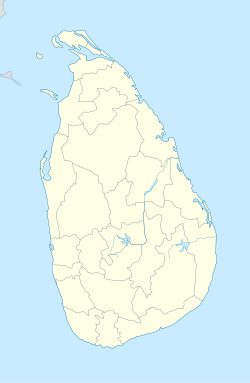- Dambadeniya
-
Dambadeniya Coordinates: 7°22′2″N 80°08′48″E / 7.36722°N 80.14667°E Country Sri Lanka Province North Western Province Time zone Sri Lanka Standard Time Zone (UTC+5:30) – Summer (DST) Summer time (UTC+6) Dambadeniya is a ruined ancient city situated in the North Western Province (Wayamba), Sri Lanka on the Kurunegala - Negombo road. It served as the capital of Sri Lanka in the mid 13th century. Much of Dambadeniya still lies buried on a huge fortified rock. Dambadeniya is situated about 31 km from Kurunegala, the modern day capital of the North Western Province.
It is believed that the Dambadeniya period was the 'Golden Era' of Sinhalese Literature.[who?]
Contents
History
Dambadeniya, about 30 km south-west of Kurunegala, became prominent in the mid-13th century.[1] It was selected as the capital of the kingdom of Sri Lanka by King Vijayabahu III (1232–36). The sovereignty of the country was at stake as a result of invasions, which dislodged Polonnaruwa as the capital. Vijayabahu, the king of the Dambadeniya dynasty, fought the invaders and established Dambadeniya. On the summit of the Dambadeniya rock he built fortifications and sturdy walls and gates. The city was made secure by a moat, a marsh and ramparts around the royal palace. During the reign of King Parakramabahu (1236–70), Dambadeniya reached the zenith of its glory.
Environs
Little remains of the palace buildings. Excavations have uncovered remains of the temple of the Relic of the tooth of the Buddha and the Royal Palace and the gardens, moats, and city walls. The double-storey temple of the Tooth Relic has Buddha images, and is identified as the Vijayasundaramaya. It has some interesting wall paintings dating from the 18th century, when it was restored.
References
Bibliography
- Amaradasa Liyanagamage, The decline of Polonnaruwa and the rise of Dambadeniya, Department of Cultural Affairs, Government Press, Colombo, Sri Lanka. 1968.
Categories:- Populated places in North Western Province, Sri Lanka
Wikimedia Foundation. 2010.

